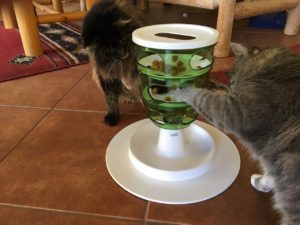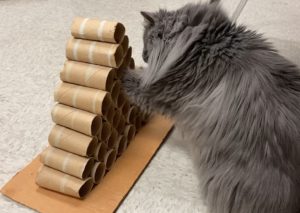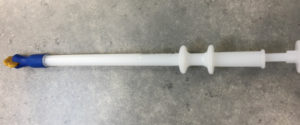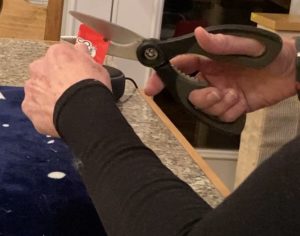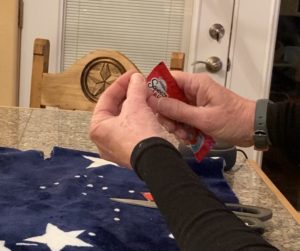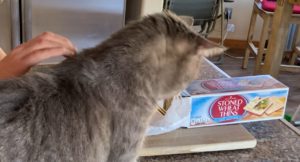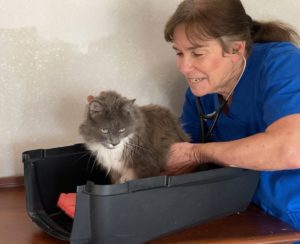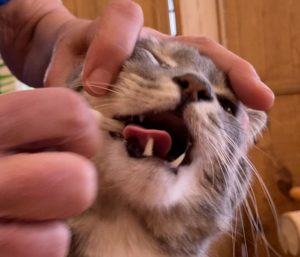 In Part 1 of Brushing Your Cat’s Teeth: Why and How, we learned that brushing your cat’s teeth with a pet toothpaste such as the PetSmile or Virbac CET brands can help reduce the bacteria in your cat’s mouth and improve her dental health. But how do you convince your cat to let you brush her teeth?
In Part 1 of Brushing Your Cat’s Teeth: Why and How, we learned that brushing your cat’s teeth with a pet toothpaste such as the PetSmile or Virbac CET brands can help reduce the bacteria in your cat’s mouth and improve her dental health. But how do you convince your cat to let you brush her teeth?
The answer is to find something she likes (a Greenies dental treat? head rubs?) that you can use as a reward and break the tooth brushing into small steps that she can master while she becomes accustomed to the process.
brushing your cat’s teeth: Step by Step
To brush your cat’s teeth, your cat needs to
- sit still and have her head held
- accept the toothpaste
- allow you to apply some toothpaste onto to her upper cheek teeth with your finger
- allow you to gently brush her teeth
Step One
It is important to watch your cat’s body language and proceed at her pace. Break these steps up into smaller ones if you need to. For example, it will be helpful if your cat knows to sit on cue reliably before asking her to let you hold her head.
step two
In step two, we will offer her the toothpaste. Cat toothpaste is available in several flavors including chicken and seafood. Choose the flavor you think she’ll like best. Offer her the toothpaste on your finger and then on the toothbrush.
step three
Once she indicates which toothpaste she likes, move to step three: put some tooth paste on your finger and try gently rubbing her teeth.
step four
Go slowly with the toothbrush and use a very light touch. Remember, when you brush your own teeth, you can feel how hard you are pressing – you don’t have this feedback when brushing your cat’s teeth. The first few sessions will be short – try to end on a positive note, before she starts to struggle or wants to leave.
Make sure to reward her after each step. It may seem counter productive to give her a dental treat – after all, you just brushed her teeth! However, you have disturbed the biofilm with brushing and the saliva now contains the toothpaste with its antibacterial components.
It may take your cat several weeks to master all these steps. Above all, go at your cat’s pace. Don’t move to the next step until she has mastered the step before.
To see how it’s done, check out the two-part video series, “Brushing Your Cat’s Teeth: Why and How” in the video gallery at www.felinepurrspective.com. Part 2 features video of cats having their teeth brushed.

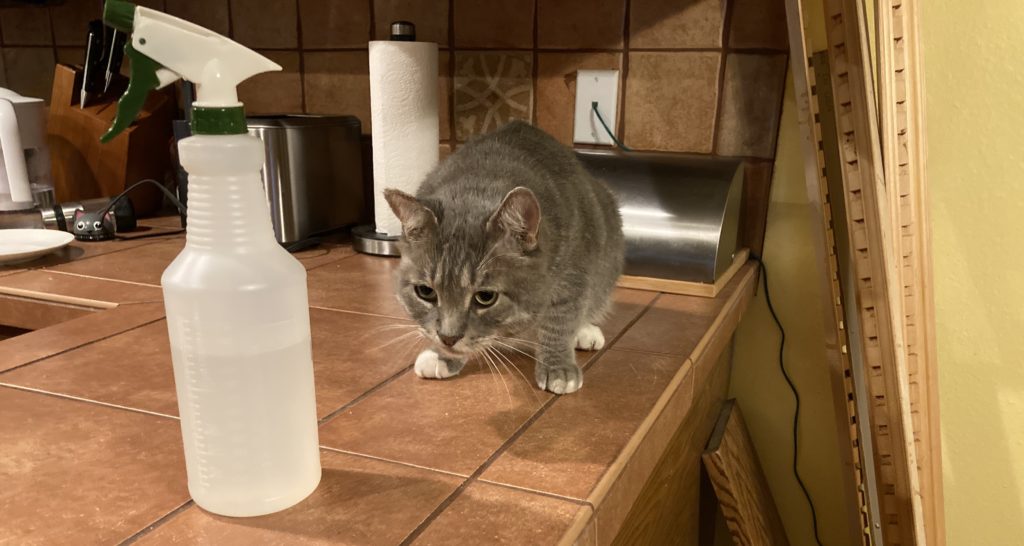 After adopting a feral cat 3 years ago, I am still struggling with cats on the counter. Gus spent most of his wild life dumpster diving, and hunting mice and bugs for food. He certainly would have availed himself of any food a good samaritan left out for the community cats. Understandably, the kitchen counter is a cornucopia of food as far as he is concerned.
After adopting a feral cat 3 years ago, I am still struggling with cats on the counter. Gus spent most of his wild life dumpster diving, and hunting mice and bugs for food. He certainly would have availed himself of any food a good samaritan left out for the community cats. Understandably, the kitchen counter is a cornucopia of food as far as he is concerned. Choose a mat for your cat to sit on.
Choose a mat for your cat to sit on.
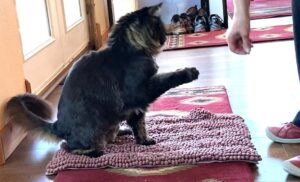
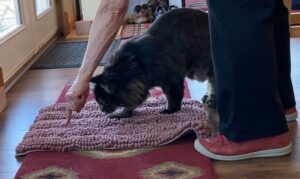
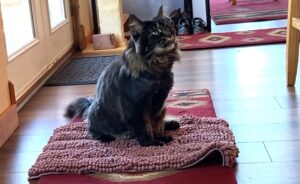 “Shape” the behavior by having her stay on the mat for increasingly longer periods of time.
“Shape” the behavior by having her stay on the mat for increasingly longer periods of time.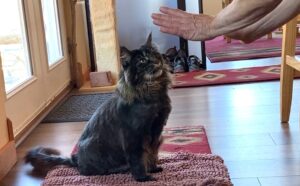 Establish a cue to let her know she can leave the mat.
Establish a cue to let her know she can leave the mat.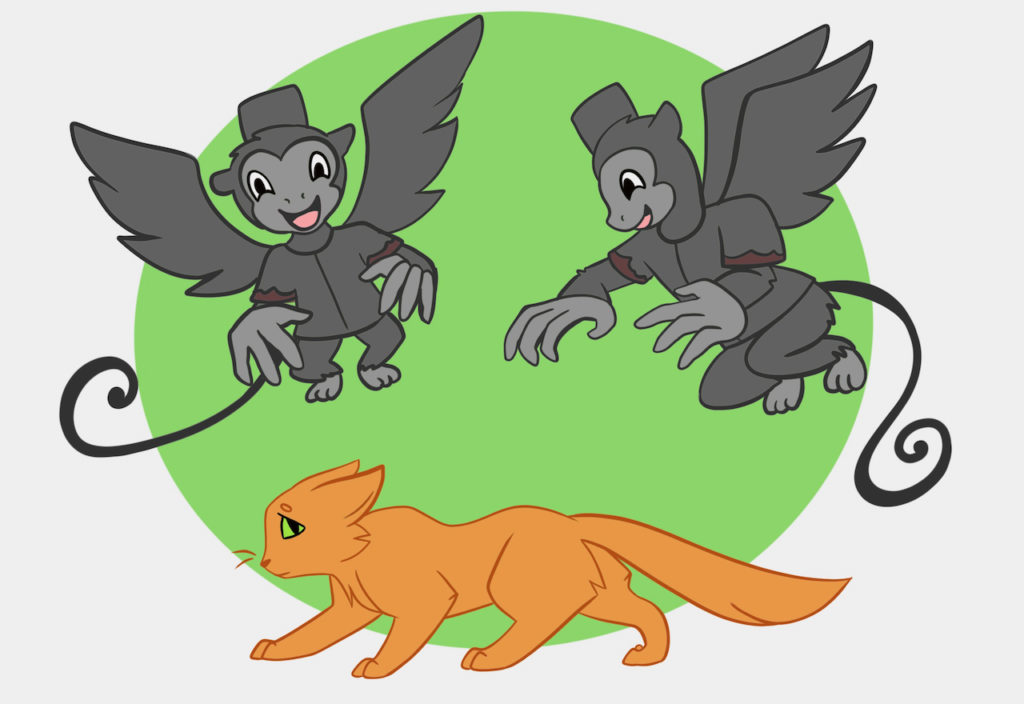
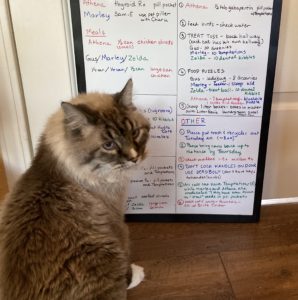
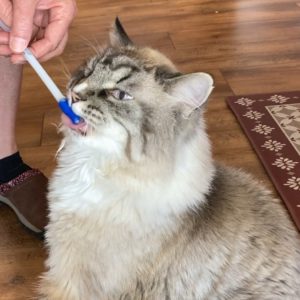 Mix up the routine from time to time – change is part of living. For example, in the medicating routine, you may wish to introduce and practice other ways of offering a pill to your cat – say with a pet piller or offering a “dummy pill” in a squeeze up treat.
Mix up the routine from time to time – change is part of living. For example, in the medicating routine, you may wish to introduce and practice other ways of offering a pill to your cat – say with a pet piller or offering a “dummy pill” in a squeeze up treat.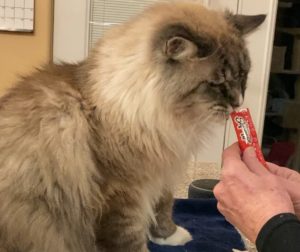
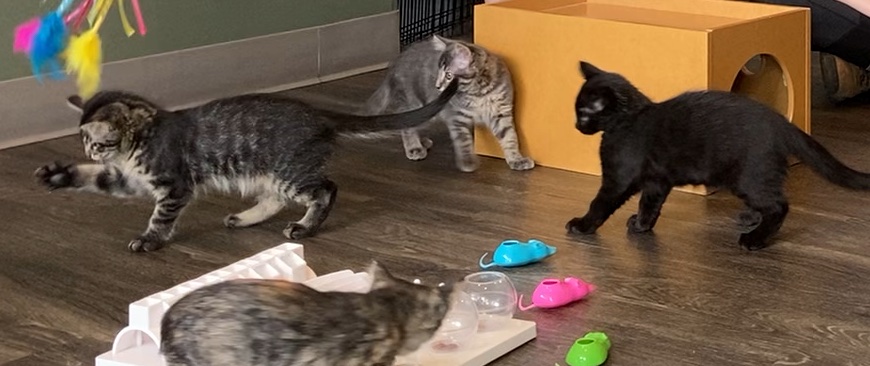
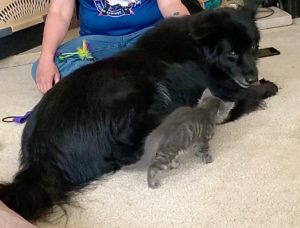
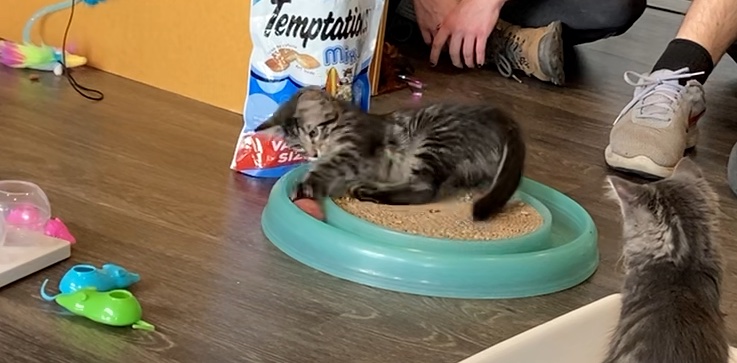
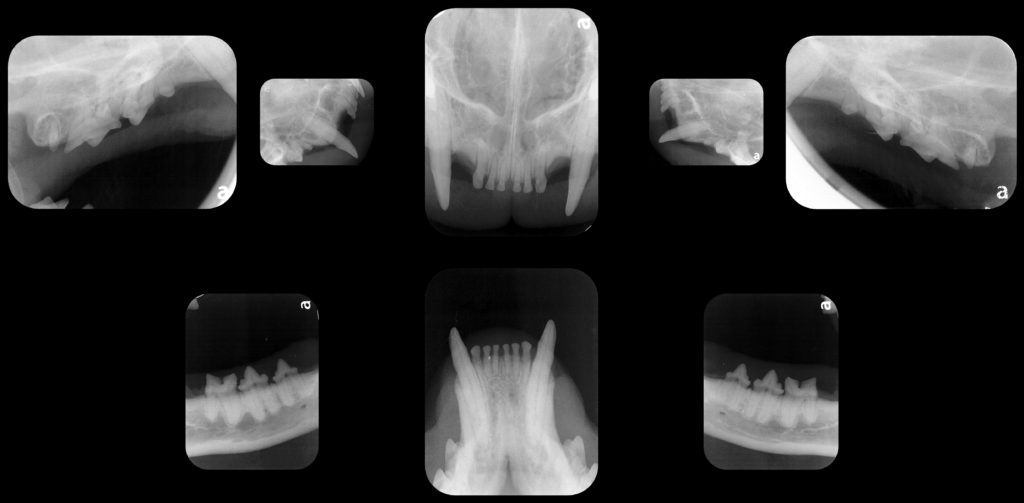
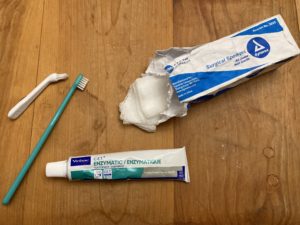
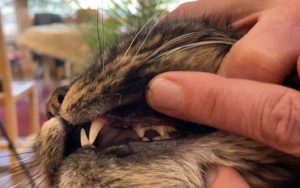 Plaque and tartar tend to accumulate on the buccal (facing the lips) side of the cat’s upper premolars. Focus on these surfaces.
Plaque and tartar tend to accumulate on the buccal (facing the lips) side of the cat’s upper premolars. Focus on these surfaces.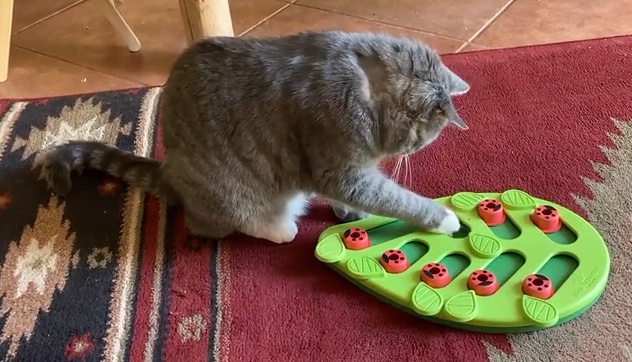 Why slide a block aside to uncover food when there is food freely available in a bowl nearby? Psychologists call the behavior “
Why slide a block aside to uncover food when there is food freely available in a bowl nearby? Psychologists call the behavior “